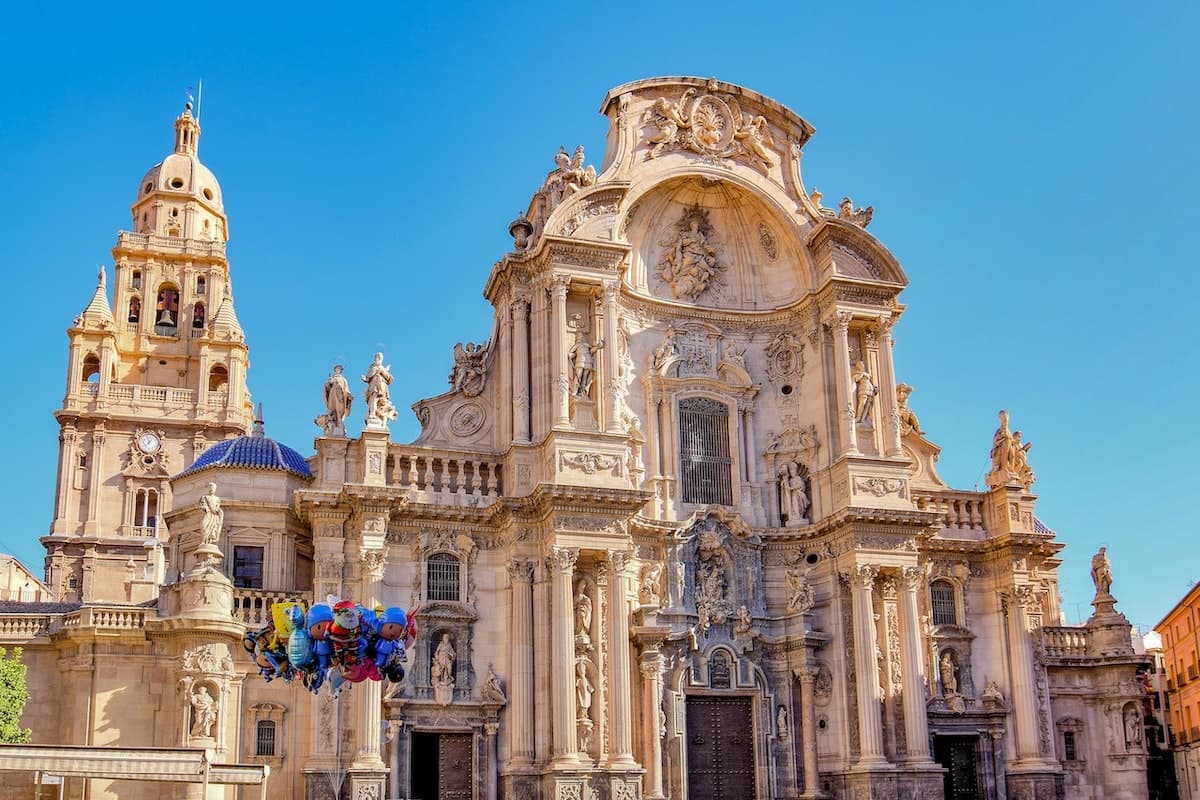A Murcian club with a history like no other

Ciudad de Murcia is a unique story in Spanish football after being founded by some players who wanted their own club where they could retire. The club would become very strong, after which another businessman bought the side and moved it to Andalusia. This formed the basis for the birth of a ‘popular club’ that’s still very much alive. Welcome to…Ciudad de Murcia.

Murcia
A city of 460,000 inhabitants, Murcia is the seventh biggest Spanish city. It’s the cultural, economic, historical, and political reference of the Region of Murcia, a city full of architecture from different cultures and eras, as well as an important agricultural provider, being the capital of Huerta de Murcia, ‘the orchard of Murcia’. Most of its export consists of fruits, vegetables, and flowers.

Murcia is also an important city in the aspect of sports. For example, its principal team, UCAM CB, competes in the national top tier and has played in this division since 2011. Another popular sport in Spain, futsal, has Murcian representation as well: ElPozo Murcia FS, which is historically the third-biggest futsal team in Spain.

The need for a new club
The origin of Ciudad de Murcia lies with Quique Pina, a footballer and intermediary who ambitiously wanted to create his own club. Together with some friends and other contacts, he managed to do so and founded CF Ciudad de Murcia in 1999. The club began in the lowest Murcian division but achieved promotion twice and, therefore, made its debut in the Segunda División B in 2001. The rojinegros ended in 5th place, which was very close to qualifying for the play-offs for promotion to the Segunda División. The following season, Ciudad de Murcia reached the play-offs and won them, going up to the second tier in the fourth year of its existence. Ciudad de Murcia was the most successful short-term project at the time.

Professional football
Concerning history, Ciudad de Murcia did not seem to be ready to participate in the second-highest league of national football. However, the murcianos secured a place above the relegation zone at the last matchday in the first two seasons, which gave the board of directors enough time to develop the club.

In the third season, 2005-06, Ciudad de Murcia constructed a young and promising team, winning more matches than expected under the leadership of Abel Resino. City was able to achieve promotion to the Primera at the last matchday but saw how their rivals won and blocked Ciudad de Murcia’s potentially historic feat. In 2006-07, the red-blacks ended 4th again, continuing their unbelievable growth.

A shock move
Even though the results of Ciudad de Murcia were outstanding, the club’s infrastructure and economy suffered. Quique Pina decides to sell the club to Carlos Marsá, a businessman from Granada who had also created his own club in 1974: Granada 74. Carlos Marsá moved Ciudad de Murcia to his hometown and reshaped the club’s identity to fit that of Granada 74. It meant the beginning of a promising project in Granada but also the end of the same in Murcia.

The first replacement
Even though Ciudad de Murcia had lived a short history, it had gained many supporters. These wanted their club to be reborn, which happened the same year after an ex-directive of Ciudad de Murcia acquired a club in the neighboring town of Lorquí. The new club was called Club Atlético Ciudad, recovered the red and black kit, and represented the old Ciudad de Murcia. However, this club did not develop as hoped and had to be dissolved in 2010 due to financial problems.

The second replacement
During the same summer, the fans wanted to create a new club instead of putting their faith in a professional – something that had already led to losing the club on two occasions. They founded Club de Accionariado Popular Ciudad de Murcia, a so-called ‘popular club’. In short, these types of clubs resist modern and capitalistic football, give all club members one share of the club, and fight for equality, fairness, and democracy. It’s an alternative to the way in which most clubs are managed nowadays.

Nevertheless, careful and sustainable financial management tends to translate to more stable development. In other words, if you don’t invest massive amounts of money in the beginning, it’s very hard to reach a prestigious league in the short term. This is also what happened to Ciudad de Murcia: only in 2018 did the club settle in the Tercera División. Ever since, the rojinegros have fought against relegation without ever coming close to promotion to the Segunda Federación.

The future
Ciudad de Murcia has some strengths that might be able to boost the club in the future: a relatively enormous fanbase, a stable infrastructure, and collaboration with other ‘popular clubs’ throughout Spain. No one in Murcia would be surprised by a promotion of Ciudad de Murcia in the upcoming years, but only time will tell. This was…Ciudad de Murcia.

Sources
- http://lafutbolteca.com/club-de-futbol-ciudad-de-murcia-s-a-d/
- http://lafutbolteca.com/club-de-futbol-atletico-ciudad/
- https://www.capciudaddemurcia.com/home/accionariado-popular/
- Borchers, L. (2021). GOLAZO. Self-published.
- Borchers, L. (2022). CARA O CRUZ. Self-published.
Leave a comment